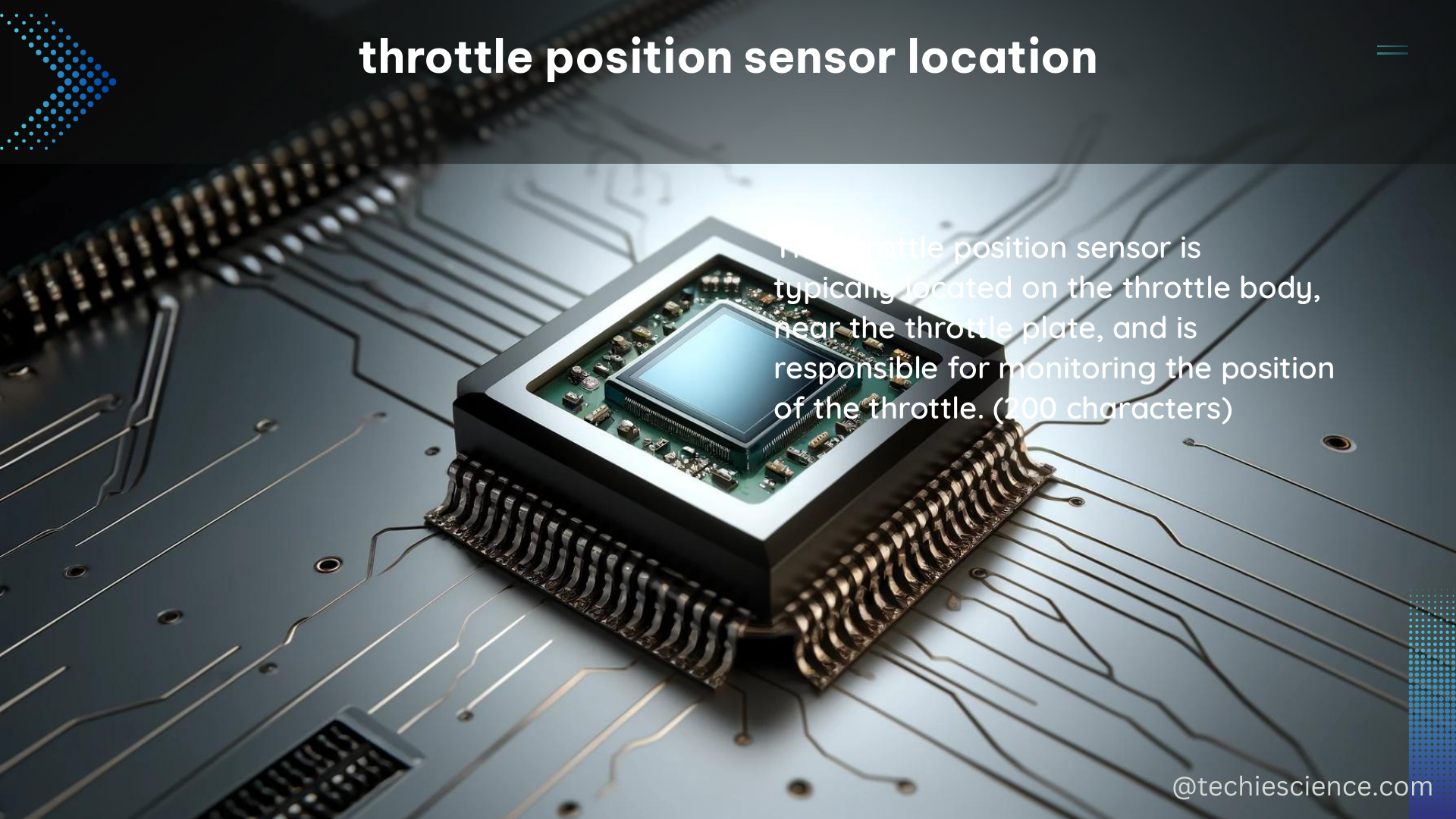The throttle position sensor (TPS) is a critical component in modern vehicles, providing real-time feedback on the position of the throttle valve. This information is essential for the engine control unit (ECU) to precisely manage the air-fuel mixture and optimize engine performance. Understanding the precise location of the TPS is crucial for proper installation, maintenance, and troubleshooting.
Throttle Body Integration: The Heart of the Matter
The TPS is typically located in close proximity to the throttle body, which is the central component responsible for regulating the airflow into the engine. The throttle body houses the throttle plate, a pivoting valve that controls the amount of air entering the engine. The TPS is strategically positioned to monitor the position of this throttle plate, converting its angular movement into an electrical signal that the ECU can interpret.
Bosch 0 280 002 025 TPS Specifications
To provide a more detailed understanding of a typical TPS, let’s examine the technical specifications of the Bosch 0 280 002 025 model:
| Specification | Value |
|---|---|
| Measuring Range | 0 to 90 degrees |
| Supply Voltage | 5 volts |
| Maximum Current Draw | 15 milliamperes |
This TPS is designed to measure the throttle angle in degrees, with a range from fully closed (0 degrees) to fully open (90 degrees). The sensor operates on a 5-volt supply and has a maximum current draw of 15 milliamperes, ensuring efficient and reliable performance within the vehicle’s electrical system.
Precise Positioning for Accurate Measurement

The location and orientation of the TPS are crucial for ensuring accurate throttle position measurement. The sensor should be installed in a position that allows it to track the full range of motion of the throttle plate, from completely closed to fully open, without interference from other engine components or external factors.
Aligning the TPS with the Throttle Plate
To achieve this, the TPS is typically mounted directly on the throttle body, with the sensor’s pivot point aligned with the pivot point of the throttle plate. This alignment ensures that the TPS can accurately measure the angular movement of the throttle plate as it opens and closes, providing the ECU with the necessary data to optimize engine performance.
Mounting Hardware and Considerations
When installing or replacing a TPS, it’s essential to follow the manufacturer’s instructions carefully and use the appropriate mounting hardware. This may include the use of specific brackets, clamps, or other securing mechanisms to ensure the sensor is firmly and correctly positioned on the throttle body.
Additionally, the TPS may require calibration to ensure that its output accurately reflects the true position of the throttle plate. This calibration process is often outlined in the vehicle’s service manual or the TPS manufacturer’s guidelines.
Troubleshooting and Maintenance
Proper maintenance and troubleshooting of the TPS are crucial for maintaining optimal engine performance and preventing potential issues. Regular inspection of the TPS, including checking for proper mounting, electrical connections, and sensor output, can help identify and address any problems before they escalate.
Common TPS-Related Issues
Some common TPS-related issues that may arise include:
- Sensor Failure: The TPS may fail due to wear, damage, or electrical issues, leading to erratic or inaccurate throttle position readings.
- Improper Alignment: If the TPS is not properly aligned with the throttle plate, it may provide inaccurate measurements, resulting in poor engine performance.
- Electrical Interference: Electromagnetic interference or wiring problems can disrupt the TPS signal, causing the ECU to receive incorrect throttle position data.
In such cases, it’s essential to follow the manufacturer’s troubleshooting procedures, which may involve testing the sensor’s output, checking electrical connections, and potentially replacing the TPS if necessary.
Conclusion
The throttle position sensor is a critical component in modern vehicles, providing the ECU with real-time feedback on the position of the throttle plate. Understanding the precise location of the TPS, its technical specifications, and the importance of proper installation and alignment is crucial for maintaining optimal engine performance and preventing potential issues.
By following the guidelines outlined in this comprehensive guide, you can ensure that the TPS in your vehicle is correctly positioned and calibrated, allowing the ECU to effectively manage the air-fuel mixture and optimize engine efficiency.
References:
- Transit Vehicle Recorder Systems Technical Specification
- Control Valve Handbook
- MIL-STD-881F: Work Breakdown Structures for Defense Materiel Items

The lambdageeks.com Core SME Team is a group of experienced subject matter experts from diverse scientific and technical fields including Physics, Chemistry, Technology,Electronics & Electrical Engineering, Automotive, Mechanical Engineering. Our team collaborates to create high-quality, well-researched articles on a wide range of science and technology topics for the lambdageeks.com website.
All Our Senior SME are having more than 7 Years of experience in the respective fields . They are either Working Industry Professionals or assocaited With different Universities. Refer Our Authors Page to get to know About our Core SMEs.